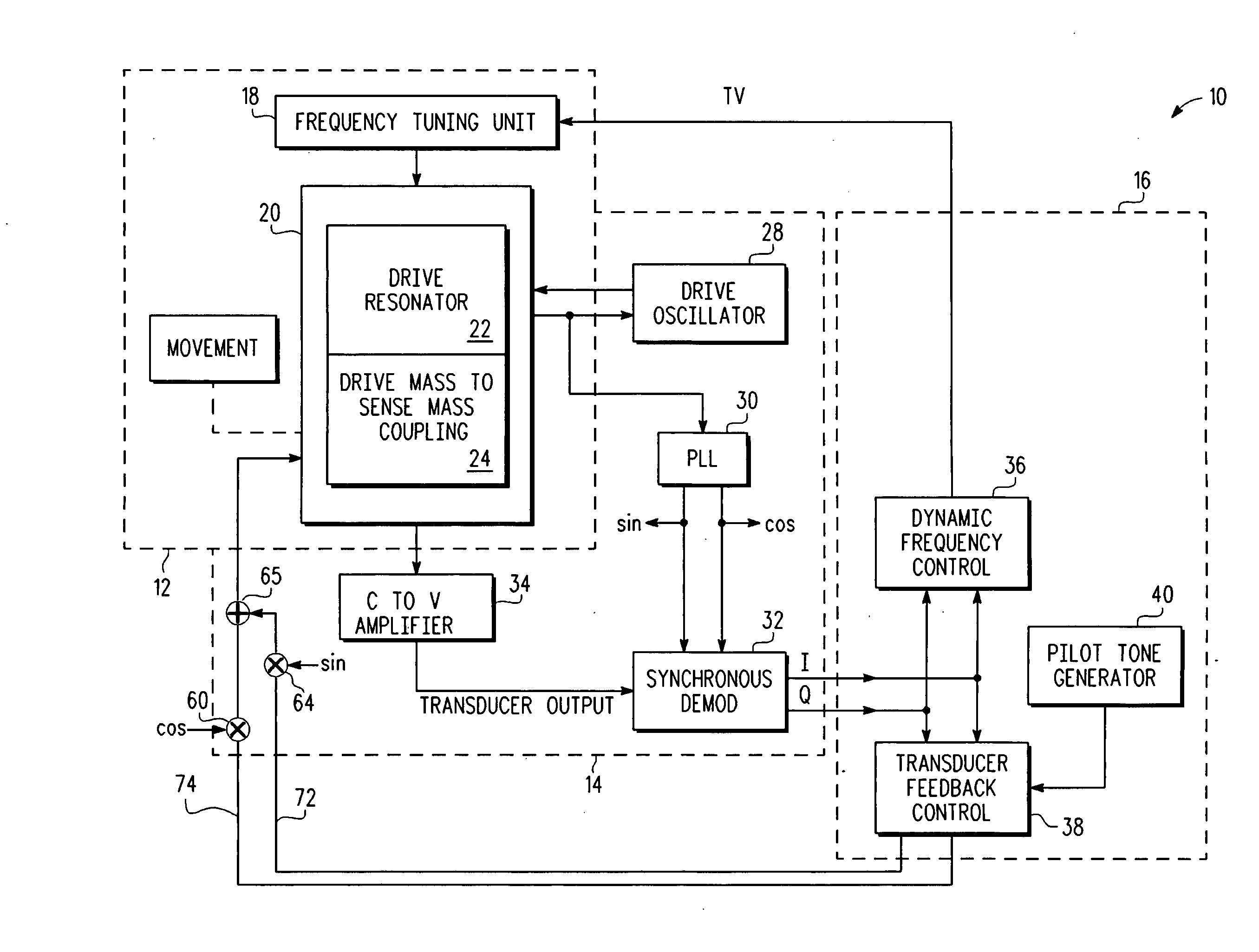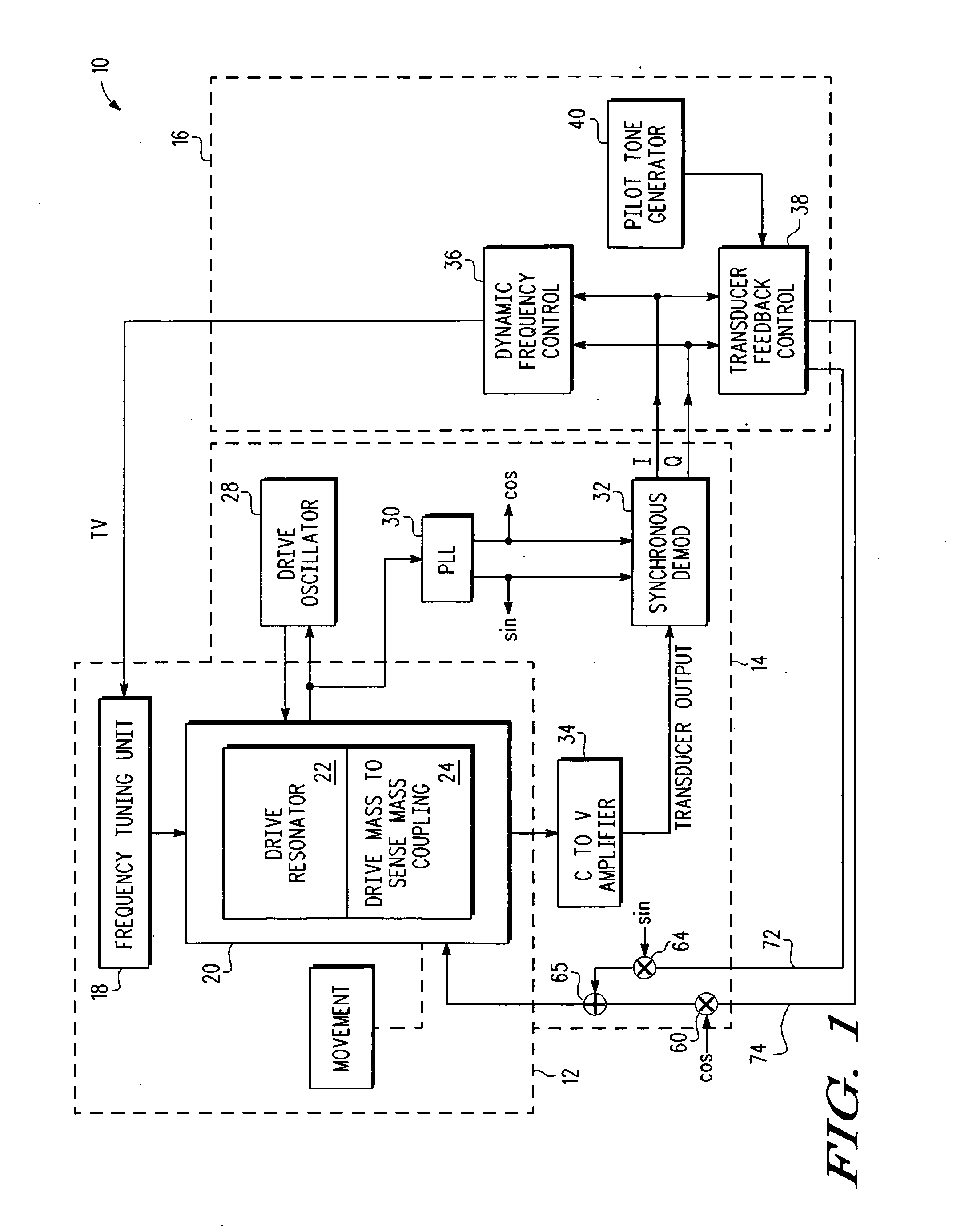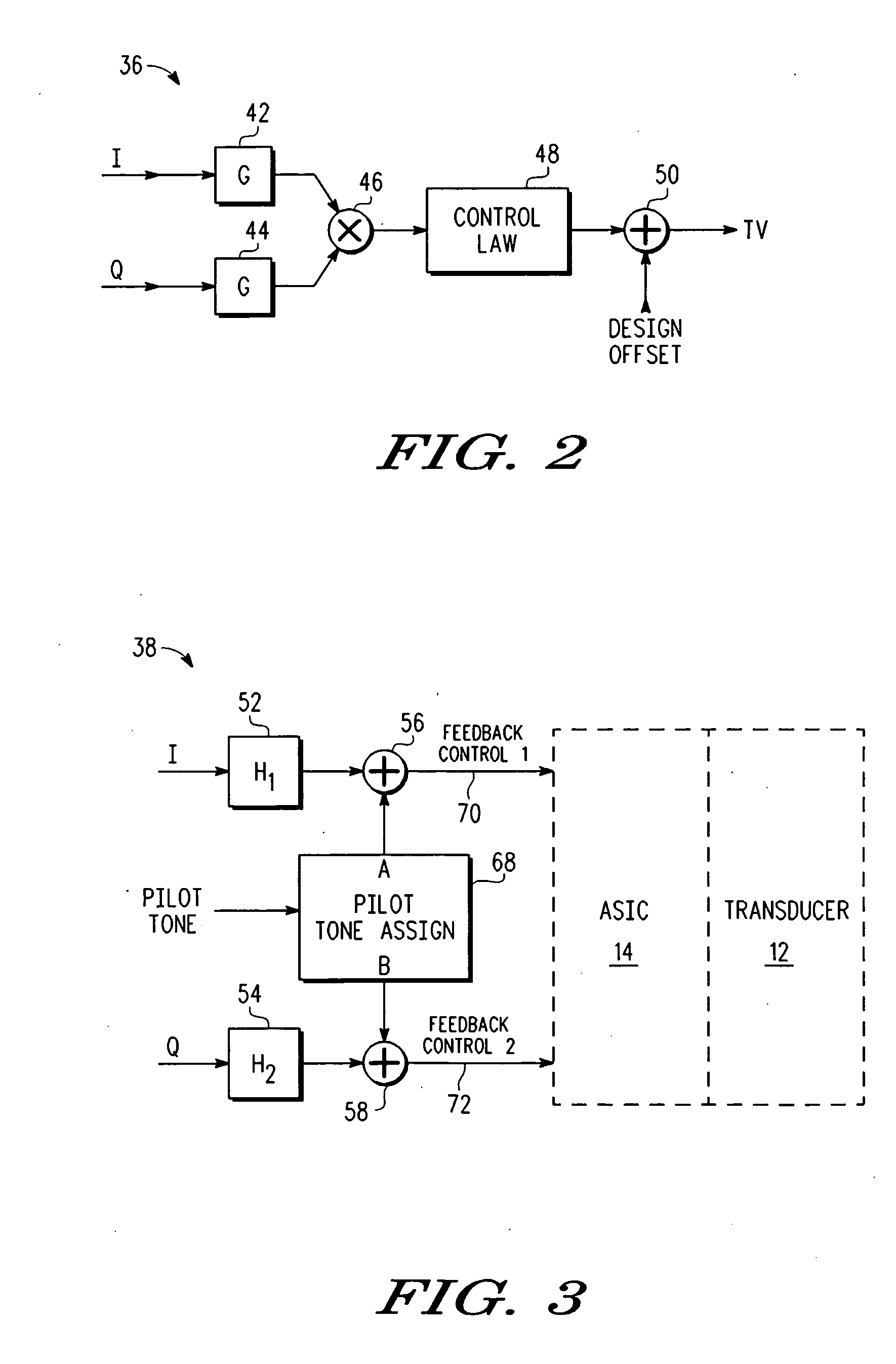MEMS inertial sensor with frequency control and method
a technology of inertial sensor and frequency control, applied in the field of microelectromechanical system (mems) devices, can solve the problems of inability to control the frequency, power, frequency and amplitude stability of an asic based oscillator operating at several hundred hz, and the prohibitively expensive inclusion of low frequency filters
- Summary
- Abstract
- Description
- Claims
- Application Information
AI Technical Summary
Problems solved by technology
Method used
Image
Examples
Embodiment Construction
[0013]In one aspect, an inertial sensor uses feedback to establish a predetermined differential between a sense resonant frequency, which is the frequency of highest gain, and a drive frequency. A pilot tone is input to a sense resonator which generates a testing signal which is then sensed on an output of the sense resonator. The testing signal is processed to provide a frequency measurement signal that is a measure of a difference between the drive frequency and the sense resonant frequency. This frequency measurement signal is demodulated by the drive frequency to generate a frequency offset signal that is used in a control law to generate a frequency adjust signal. The frequency adjust signal is used as feedback to control the sense resonant frequency. This feedback process is continuous so that as ambient conditions change, such as a temperature change, the difference between the sense resonant frequency and the drive frequency can be maintained at the desired amount. At power ...
PUM
 Login to View More
Login to View More Abstract
Description
Claims
Application Information
 Login to View More
Login to View More - R&D
- Intellectual Property
- Life Sciences
- Materials
- Tech Scout
- Unparalleled Data Quality
- Higher Quality Content
- 60% Fewer Hallucinations
Browse by: Latest US Patents, China's latest patents, Technical Efficacy Thesaurus, Application Domain, Technology Topic, Popular Technical Reports.
© 2025 PatSnap. All rights reserved.Legal|Privacy policy|Modern Slavery Act Transparency Statement|Sitemap|About US| Contact US: help@patsnap.com



